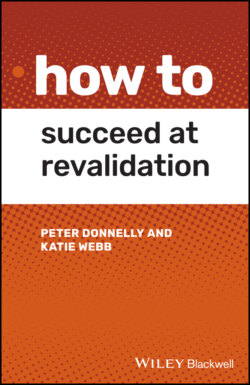Читать книгу How to Succeed at Revalidation - Peter Donnelly - Страница 10
Regulation in Health Professions Professionalism and Society
ОглавлениеIn early history, occupations began to evolve and move into what would now be considered a profession. The key milestones marking this transition from simple activity to a profession include full‐time occupation, establishment of training schools or universities, codes of ethics and regulation, licensing legislation and colleague control. Another key component in this transition to a profession was the balance between a level of autonomy of work and the regulatory requirements. Larson added to the characteristics above with the addition of high standards of professional and intellectual excellence, as well as referring to professions as “exclusive elite groups” (Larson 1978, p. 20).
The three original occupations of law, the clergy and medicine arose through the medieval universities of Europe. By the turn of the nineteenth century, with occupation specialization, different bodies claimed and achieved professional status including nursing and teaching.
The concept of medical professionalism probably dates back to the late medieval times when doctors organized a professional guild (Sox 2002). At that point medical professionalism was viewed as the art of practicing medicine to a certain set of standards that were set by the profession itself, essentially self‐regulation. This has evolved and responded to societal and political changes. The professions addressed a range of societal issues and in return society afforded these professions a number of privileges, including monopoly status, the authority to decide who could enter the profession and the ability to influence government policy.
In essence there was an implied social contract (Cruess et al. 2010) where there was an acceptance of the balance between altruism and self‐regulation. Although early definitions of the medical profession have been doctor‐centered, there has been a shift recognized by regulatory bodies toward a position of medical professionalism as being a social construct, a social contract between doctors and society (Cruess and Cruess 2008).
The social contract is now recognized as a tripartite agreement involving three interconnected societal elements:
1 The government, employers, and health care managers
2 Patients, patient groups and the general population
3 The medical profession and its professional bodies.
Each of these groups has its own responsibilities and roles in fulfilling its side of the contract. There is recognition from certain sections of the medical profession that the social contract is a dynamic entity that is ever‐changing in the context of rising systematic pressures and societal expectations. There are many factors that impact upon the contract, including the regulators, social media, print and broadcast media, and professional organizations (Cruess and Cruess 2011).
Recognizing the evolving position, in 2015 Jeremy Hunt, the then Health Secretary, called for a new social contract between the public, health and care services. In a speech to the Local Government Association (LGA) annual conference in Harrogate, Mr. Hunt urged the public to take more personal responsibility:
for looking after the elderly
for their own health
in using finite NHS resources.
He argued that, while integration of health and social care is vital to delivering the highest standards of health and care, personal responsibility needs to sit alongside system accountability (Hunt 2015).
There is a further element to the evolution of health roles. It has been argued that there has been a significant blurring between the roles of health professions. There are arguments for and against this development. Although roles have evolved and are constantly changing, there is a current strategic position in the UK from governments and the relevant statutory education and training bodies to actively upskill non‐medical professions and develop new roles such as the Physician Associate (PA). There are possible risks with this strategy, and some argue that these developments have been accelerated to reduce costs and that there is a risk the system now expects some professions to work beyond their competency ceiling (Oxtoby 2009).
